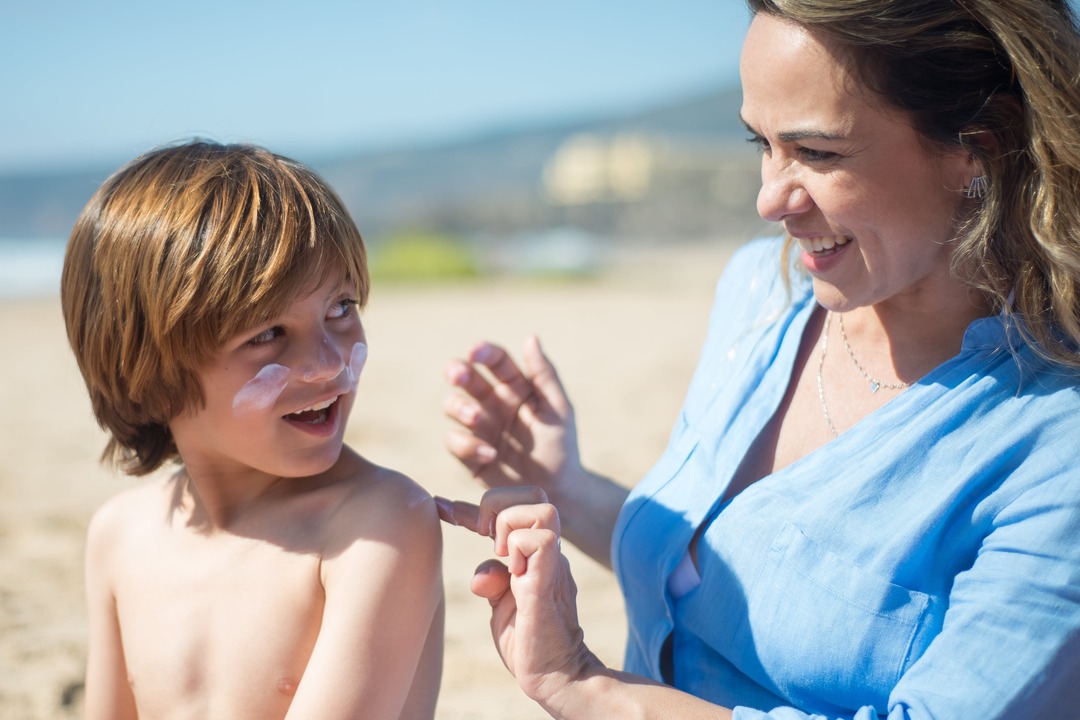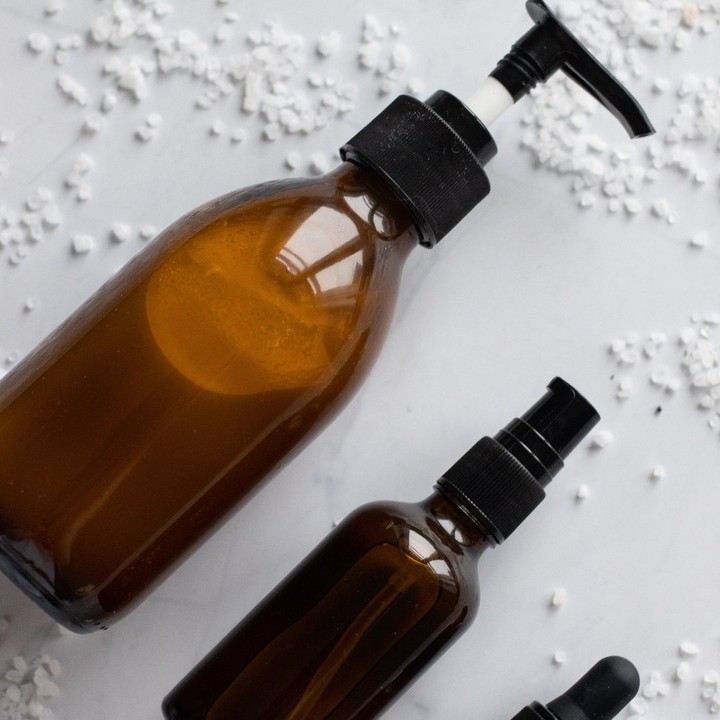
How to Choose the Best Sunscreen for Kids
How to Choose the Best Sunscreen for Kids
Kids have sensitive skin that is more susceptible to sunburns and long-term damage from UV radiation. As a result, selecting the right sunscreen for them is of paramount importance. With countless options available in the market, the task may seem daunting. However, by understanding key factors and ingredients, parents can make informed choices to protect their Kids effectively. This article provides a comprehensive guide on how to choose the best sunscreen for Kids.
1. Understanding UV Radiation and Its Effects
Before diving into sunscreen selection, it's essential to understand the nature of UV radiation and its impact on children's skin. UV radiation from the sun consists of UVA and UVB rays.
- UVA rays penetrate deeply into the skin, causing premature aging and increasing the risk of skin cancer.
- UVB rays primarily affect the skin's outer layer, leading to sunburn and contributing to skin cancer risk.
Children's skin is thinner and more delicate than adults, making it more vulnerable to UV radiation. Therefore, sunscreen that provides broad-spectrum protection against both UVA and UVB rays is crucial.
2. Choose Broad-Spectrum Sunscreens
Broad-spectrum sunscreens protect against both UVA and UVB rays. When selecting a sunscreen, always check the label to ensure it offers broad-spectrum protection. This ensures comprehensive coverage against various harmful effects of UV radiation.
3. Select a Suitable SPF Level
Sun Protection Factor (SPF) indicates a sunscreen's effectiveness in blocking UVB rays. While higher SPF values offer increased protection, it's essential to choose a sunscreen with a suitable SPF level for children.
- SPF 15: Provides adequate protection for daily activities and short sun exposure.
- SPF 30-50: Recommended for extended outdoor activities and prolonged sun exposure.
- SPF 50+: Ideal for children during intense sun exposure or for those with very fair skin.
However, remember that no sunscreen can offer 100% protection. Reapplication and other protective measures are equally crucial.
4. Consider the Formulation and Ingredients
Children's skin is sensitive, making them prone to allergies and skin reactions. When choosing a sunscreen:
- Opt for Physical (Mineral) Sunscreens: These sunscreens contain active ingredients like zinc oxide and titanium dioxide, which sit on the skin's surface and reflect UV rays. They are less likely to cause skin irritation and are suitable for sensitive skin.
- Avoid Oxybenzone and Octinoxate: Some chemical sunscreen ingredients, such as oxybenzone and octinoxate, have raised concerns about potential hormone-disrupting effects. Consider sunscreens free from these ingredients, especially for younger children.
- Look for Hypoallergenic and Fragrance-Free Options: To minimize the risk of allergic reactions, choose sunscreens labeled as hypoallergenic and free from added fragrances.
5. Water-Resistant Sunscreens for Active Kids
Kids, with their boundless energy and enthusiasm, often find themselves immersed in activities that make them sweat or dive into pools, lakes, or the ocean. For parents, ensuring that their children remain protected from the sun's harmful rays during these active moments is paramount. This is where water-resistant sunscreens come into play. Understanding their importance and how to effectively use them can significantly enhance sun protection for our young ones. You can choose Lirene Vanilla Scent 50spf For Kids 150ml
What Does "Water-Resistant" Mean?
The term "water-resistant" on sunscreen labels indicates that the product maintains its effectiveness for a specified duration when exposed to water. There are two standard water-resistance durations:
- 40 minutes: Sunscreens labeled with this duration maintain their effectiveness for 40 minutes in the water.
- 80 minutes: These sunscreens remain effective for 80 minutes while swimming or sweating.
It's essential to note that these durations refer to the product's water resistance, not the total duration of sun protection. Even with water-resistant sunscreens, reapplication remains crucial, especially after towel drying, which can remove the sunscreen.
Benefits of Water-Resistant Sunscreen for Active Kids
- Extended Protection: For children who love swimming, water-resistant sunscreens ensure that they remain protected while in the water. Whether they're splashing around in a pool or playing at the beach, these sunscreens offer continuous protection against harmful UV rays. You can choose Esse Kids Sun Lotion (Spf50) 150ml
- Sweat Protection: Active play often leads to sweating, which can reduce the effectiveness of regular sunscreens. Water-resistant variants maintain their efficacy even when children perspire, ensuring consistent protection during energetic play sessions. You can choose Nivea Sun Kid (SPF 50+) Swim & Play 150 ml
- Convenience: With water-resistant sunscreens, parents can have peace of mind knowing that their children are protected for an extended period. This reduces the frequency of sunscreen reapplication, making outdoor adventures more enjoyable and less interrupted.
Proper Usage Tips
While water-resistant sunscreens offer extended protection, their effectiveness can diminish over time, especially with exposure to water and sweat. Here are some essential tips for using these sunscreens effectively:
- Apply Before Going In: Always apply water-resistant sunscreen at least 15-30 minutes before swimming or participating in activities that may cause sweating. This allows the sunscreen to bond with the skin effectively.
- Use Generously: Ensure thorough coverage by applying a generous amount of sunscreen to all exposed areas of the skin. Don't forget commonly overlooked areas like the ears, neck, back of the knees, and tops of the feet.
- Reapply After Water Activities: Even with water-resistant properties, sunscreen can wear off, especially after prolonged water exposure. Reapply the sunscreen immediately after getting out of the water and towel drying to maintain protection.
- Frequent Reapplication: While the sunscreen may claim 40 or 80 minutes of water resistance, it's advisable to reapply more frequently, especially during intense sun exposure or prolonged outdoor activities.
- Combining with Protective Gear: While water-resistant sunscreens offer valuable protection, combining them with other protective measures enhances sun safety. Encourage children to wear hats, sunglasses, and UV-protective clothing for comprehensive sun protection.
6. Check the Expiry Date
Like other skincare products, sunscreens have a shelf life. Always check the expiry date before purchasing and ensure that the sunscreen is within its usable period. Expired sunscreens may lose their effectiveness and can cause skin reactions.
7. Apply and Reapply Properly
- Choosing the right sunscreen is only half the battle. Proper application and reapplication are crucial for effective protection:
- Apply Generously: Ensure thorough coverage by applying a generous amount of sunscreen to all exposed areas of the skin, at least 15-30 minutes before sun exposure.
- Reapply Frequently: Sunscreen effectiveness diminishes over time, especially after swimming, sweating, or towel drying. Reapply sunscreen every two hours or more frequently if necessary.
Selecting the best sunscreen for Kids requires careful consideration of various factors, including protection level, ingredients, and application practices. Prioritize broad-spectrum sunscreens with suitable SPF levels and consider physical formulations for sensitive skin. Always remember to apply and reapply sunscreen generously and frequently, especially during prolonged sun exposure or outdoor activities. By making informed choices and prioritizing sun protection, parents can ensure their children enjoy the outdoors safely and minimize the risk of sun-related skin damage in the long run.
 العربية
العربية





